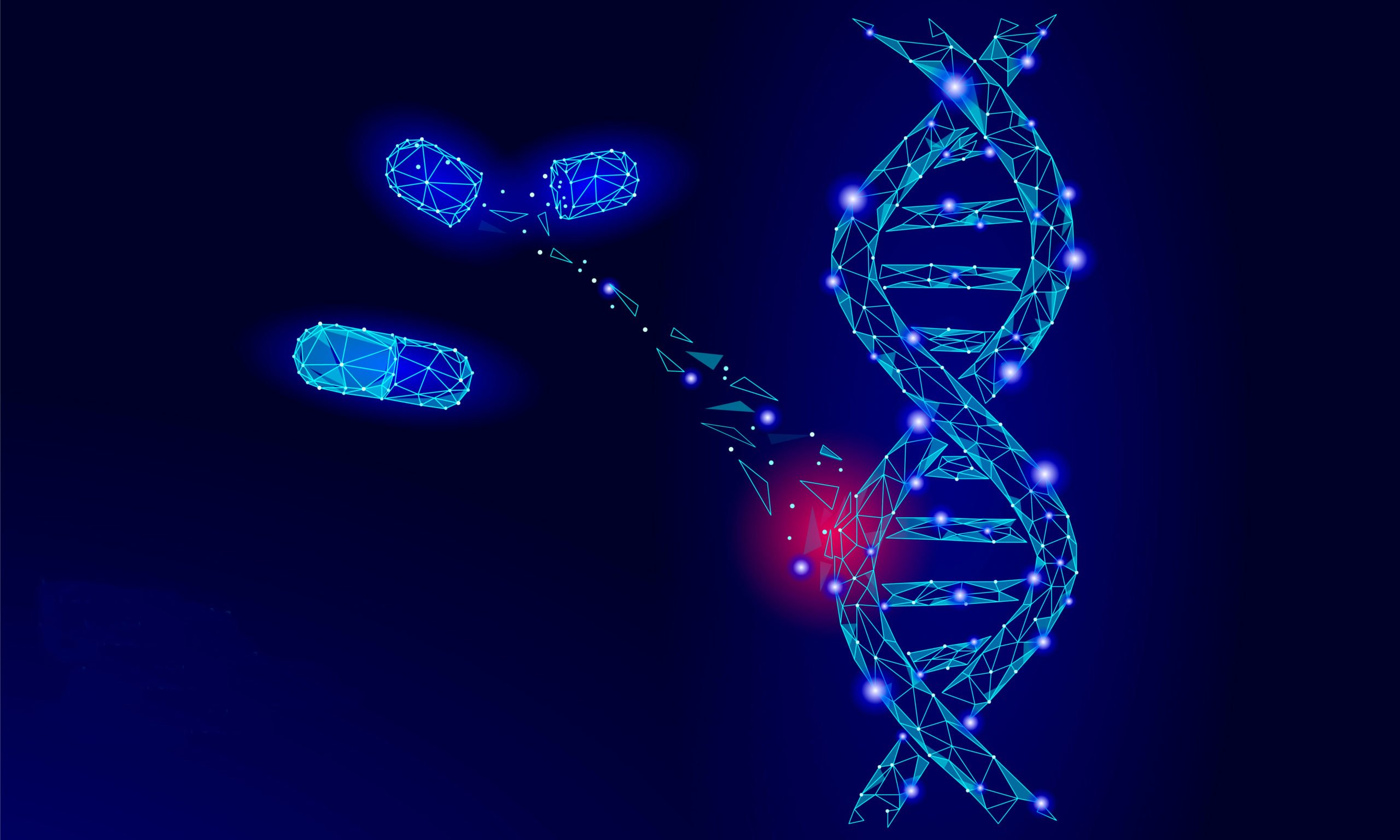
Gene therapy is coming to the fore as a way to treat the root cause of disease,rather than just the symptoms. Imagine a world where any genetic disorder can be cured by a single dose of a gene therapy treatment.
The best vector for the job
The goal of gene therapy is to correct disease-causing variations in the DNA of the patient’s affected tissue. Treating only the relevant (somatic) cells is an important difference to the controversial germline modifications, where any changes would be passed on to potential children. Delivering this targeted treatment machinery to the correct cells is a key challenge.
One solution to this challenge is to use the right kind of shuttle, or vector, to introduce the functional gene. The groups at CMRI, headed by Ian Alexander and Leszek Lisowski, primarily focus on the use of adeno-associated virus (AAV) as a vector to deliver gene therapies directly into specific cells within the patient. AAV is widely regarded as a safe and effective vector – it is utilized in the first FDA-approved in vivo gene therapy, Luxtruna, to treat an inherited form of blindness.
One benefit of using AAV is that it avoids any germline modifications, since upon transduction its genome is not integrated into the host genome. Therefore, even if the vector finds its way into germline cells, it is very unlikely to be inherited as in the vast majority of cases any DNA not integrated into the host genome is not passed on.

The safety of AAV can be enhanced even further through optimization. One key issue is the idea of tropism: ideally a treatment targets only a tissue(s) of interest, with only minor effects in other tissues. Therefore, viruses with a very specific tropism are required for potential treatments to be delivered only to a target tissue. This is an area in which the teams at CMRI have expertise, having developed methods to randomly recombine the outer shell, or capsid, of the virus that determines tropism, as well as clinically relevant models to perform selection of the best vectors for the job (Lisowski et al. 2014; Cabanes-Creus et al. 2018).
Despite these benefits, when using AAV as a vector the lack of integration into the host genome can also be an issue for long-lasting therapies. Since the therapeutic gene is outside of the host genome, the length of time it persists depends on a number of factors. However, in the vast majority of cases the DNA introduced by the vector is eventually lost, and any therapeutic benefit is lost with it.
CRISPR-Cas addresses persistence
Instead of aiming to deliver an additional functional copy of a mutated gene, one way to sidestep this limitation is to use a targeted genome editor. Again, guiding the editor to specific (non-germline) tissues, the introduced vector can make a lasting change such as correcting disease-causing change in the genetic code. An obvious candidate here is CRISPR-Cas9 which can be highly effective, specific and versatile.

By tweaking the tropism of the AAV vector, we can target only the cells of interest, avoiding editing in any tissues except those directly affected by the disease. The combination of a specific tropism conferred by AAV and genome editing using CRISPR-Cas9 is therefore an attractive prospect for safe and effective gene therapies.
A key caveat here, though, is getting the design right on the CRISPR side. The CRISPR-Cas9 system relies on a guide to target it to the correct place in the genome. If there are other places in the genome similar to the on-target site, outcomes for the patient could be disastrous. Therefore, the genome editing side of any therapy also should be carefully assessed before any clinical applications are even considered.
This is where the tools developed by the CSIRO Digital Genome Engineering team come in. Software tools such as TUSCAN (Wilson et al. 2018) and VARSCOT (Wilson et al. 2019) can help design the best possible guides for gene therapy applications, maximizing the therapeutic benefit while minimizing the risk of unwanted off-target effects. This digital approach to genome engineering lays the foundation for pre-clinical studies, ensuring that further assessments of safety and efficacy have the best chance of succeeding.
Is it safe?
So it is clear that before bringing any gene therapy to the clinic, especially one utilizing a genome editing technology, it first needs to be carefully assessed for safety. A key element is hence to investigate if and how parts of the vector genome are incorporated into a host. Although AAV vectors are not known to frequently integrate into the host genome, the introduction of double-stranded breaks by CRISPR-Cas9 might increase the risk of AAV integration. It is therefore important to challenge the assumption of ‘no integrations’ in the genome editing therapy context.
To assess this safety we are collaborating with CMRI, in another project to develop method for characterising viral and vector integrations into a host genome. The aim here is to interrogate any integrations to make sure they aren’t likely to cause any harm to future patients.
Ian Alexander’s team at CMRI have undertaken this kind of investigation before (Kamboj et al 2017; Hallwirth et al 2015), but in these investigations the viruses were known to integrate in a particular manner. In these studies they knew what to look for, but the current task of finding integrated AAV is challenging because these events might not occur in the same way, and are predicted to be rare. Finding them in the host genome might be like looking for a needle in a haystack. AAV also doesn’t appear to have particular patterns of integration in the human genome, so we need to take an unbiased approach to maximize the chance of finding any integration sites.
Although developed to investigate the integration of clinical vectors, this approach could also be used to uncover patterns of integrations of wild-type viruses and investigate their role in various pathologies.
New and improved gene therapies
Gene therapies utilizing CRISPR-Cas show great promise as effective and long-lasting treatments for genetic disorders. However, to realize this promise these prospective therapies must be rigorously tested for safety and efficacy, and there is still a way to go before this promise can be realised. By bringing together the expertise of the CMRI teams in developing gene therapies with our bioinformatics skills and in consultation with CSIRO’s Responsible Innovation Initiative, we’re contributing to these future treatments for genetic disorders.
References
Cabanes-Creus et al. Codon-Optimization of Wild-Type Adeno-Associated Virus Capsid Sequences Enhances DNA Family Shuffling while Conserving Functionality Mol Ther Methods Clin Dev 2018
Hallwirth et al. Coherence analysis discriminates between retroviral integration patterns in CD34(+) cells transduced under differing clinical trial conditions Mol Ther Methods Clin Dev 2015
Kamboj et al. Ub-ISAP: a streamlined UNIX pipeline for mining unique viral vector integration sites from next generation sequencing data BMC Bioinformatics 2017
Lisowski et al. Selection and evaluation of clinically relevant AAV variants in a xenograft liver model Nature 2014
Wilson et al. High Activity Target-Site Identification Using Phenotypic Independent CRISPR-Cas9 Core Functionality CRISPR J 2018
Wilson et al. VARSCOT: variant-aware detection and scoring enables sensitive and personalized off-target detection for CRISPR-Cas9 BMC Biotech 2019

